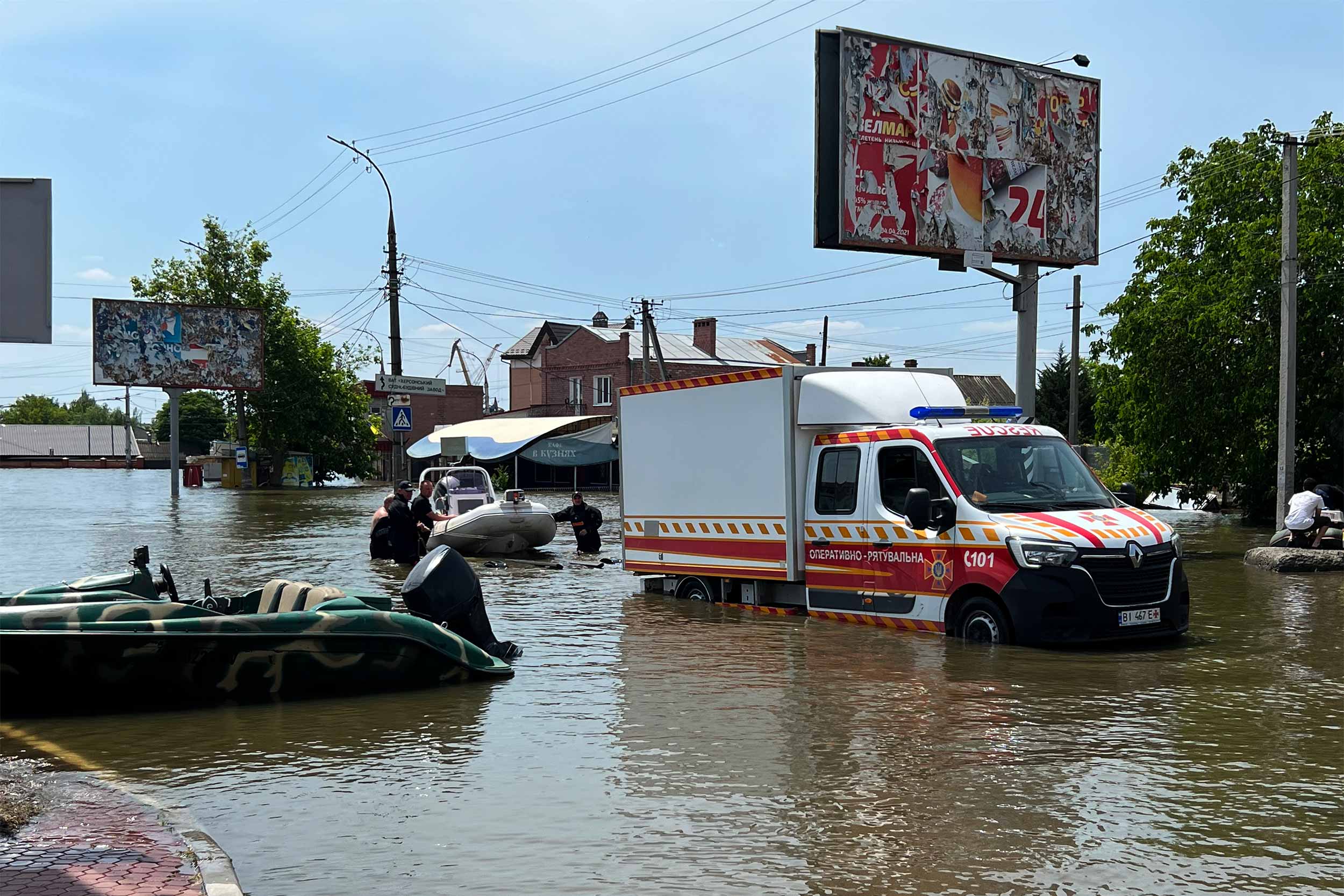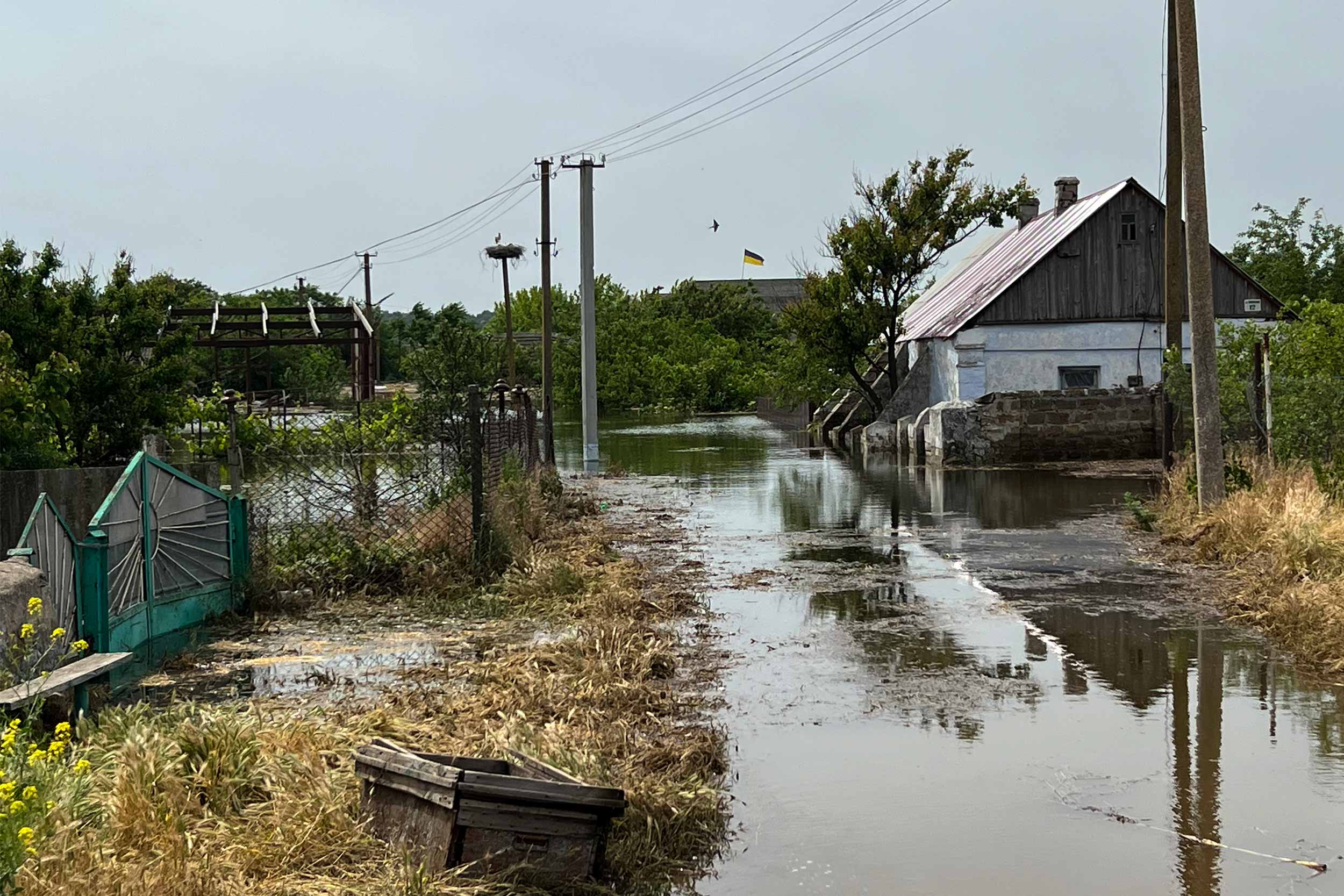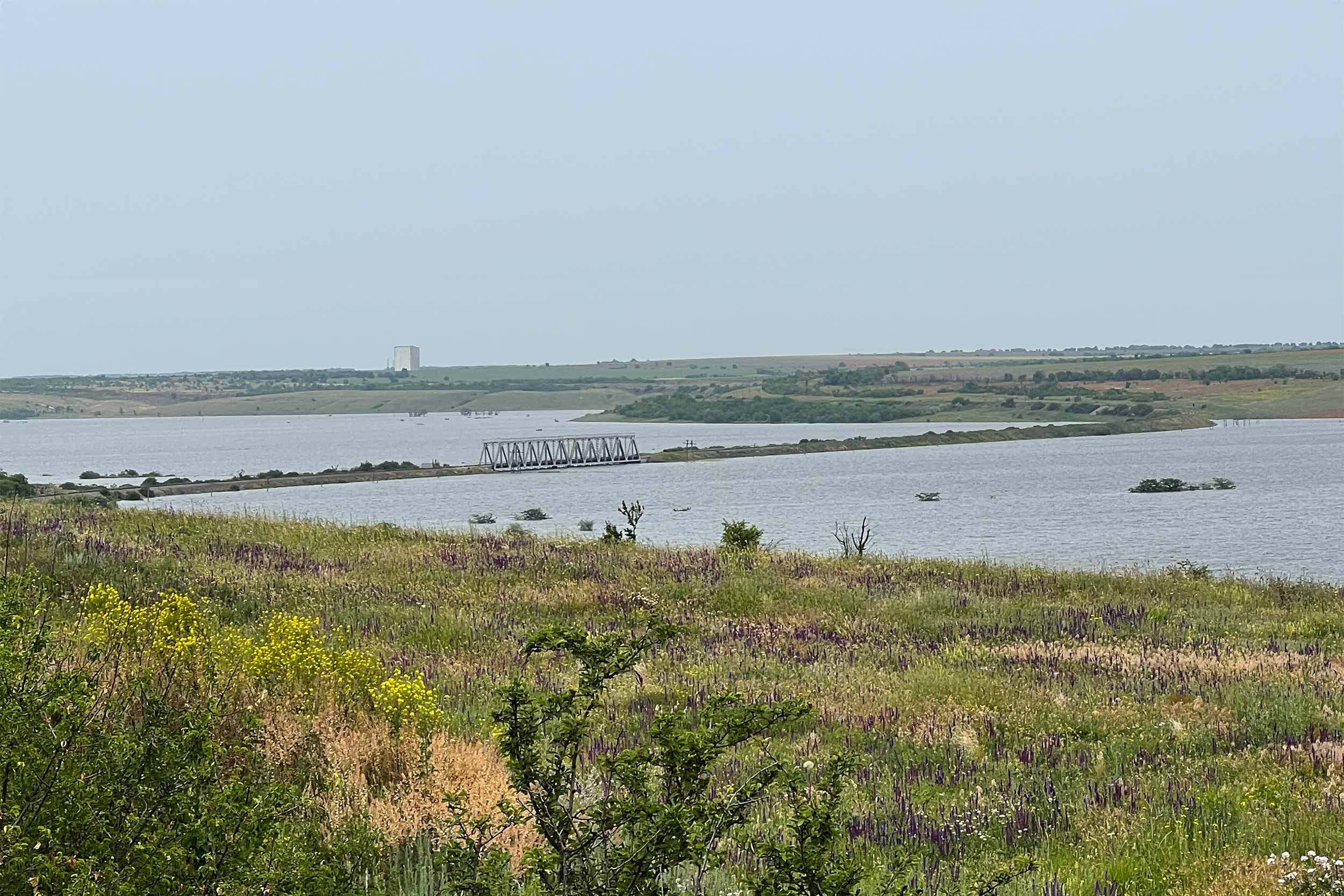Ukraine: Rebuilding After the Dam Disaster
Residents of Kherson and Mykolaiv regions face an uncertain future as flood waters recede.
“Putin didn't finish us off, so now the water has come,” said 50-year-old Vadym Sheremet, surveying the devastation wreaked to his village by the June 6 breach of the Kakhovska dam.
Sheremet is a farmer, a father of nine children and a Protestant pastor in Pavlo-Maryanivka, Mykolaiv region. Most of his wheat, barley and sunflower fields are still under water, and he is apprehensive about what he will find when the water recedes.
"I don't know what I will do next,” Sheremet continued. “I will probably start with the street. I will clean up the rubbish that the dirty water will leave behind, I will assess what damage it has caused to the crops and soil, and I will continue to work. A farmer is not a businessman. You have to love farming.”

Residents of Kherson and Mykolaiv regions face an uncertain future after the dam in Russian-controlled Nova Kakhovka was seriously damaged in the early hours of June 6. Both Russia and Ukraine blame each other for the disaster. The environmental impact is expected to be huge, and the human cost is growing. With dozens of towns and villages flooded along the river, at least ten people are confirmed to have died and over 40 are missing.
The communities around the town of Snigurivka in Mykolaiv oblast have been particularly hard hit. A year ago, the Russians shelled the surrounding settlements heavily as well as mining the fields in the area. Following the June 6 disaster, the Ingulets river overflowed, flooding hundreds of houses.
"The consequences will be very significant."
In Pavlo-Maryanivka, the 250 residents still left have had no electricity since June 7. Volunteers brought a single generator, and in the village’s only shop you can buy water, biscuits, preserves. Alla, the sales assistant, says she will have to throw away all the spoiled products in the refrigerators.
Maria, 55, a former teacher of foreign literature, explained that she and her husband had been trying to set up a smallholding in the village before the war. They had a cow and many chickens, all now lost.
Replacing them seems impossible; a young cow costs 18,000 hryvnias (490 US dollars), unattainable on the pension of 2,500 hryvnias (68 dollars) she receives as a retired teacher.
Gesturing to her flooded plots, Maria explains that in the spring she and her husband had planted onions, potatoes, beets, and carrots as well as alfalfa, as they planned to diversify into raising rabbits. Now neither of them know what the future might hold.
"The worst thing for a person is not to have plans,” Maria said. “I live for today. I am worried about the water in the well. Will we be able to use it not just to drink, but to wash in it, or take a shower?"
Both are concerned about the safety of the local water supply. Maria is afraid to enter the flooded garden after her husband, who had tried to check the depth of the flooding, later complained of his skin itching and burning after exposure to the water. They assume that fertilizers have polluted the water.
Inna Timchenko, an ecologist from Mykolaiv, said that these fears were justified.

"The biggest concern is what is washed away with this water,” she continued. “We know for sure that about 150 tonnes of engine oil that got into the water. These are also cemeteries, cesspools. Unfortunately, we will expect the deterioration of bacteriological indicators of both surface water and the possible ingress of chemicals into underground water.”
As for the environmental consequences on the eastern bank of the Dniepro, still occupied by Russian troops, analysts can only draw conclusions based on satellite images as they have no access to those territories.
"Gradually, the consequences will be very significant,” Timchenko said. “First of all, it is for waterfowl, fish. Over time, the ecosystem of the Dnipro-Buzka estuary will be disturbed. How quickly it will recover will depend on how events will unfold. Constant shelling also affects the ecosystem.”
Experts from the south-western district’s environmental inspection department have been working on an impact assessment since the first days of the full-scale Russian invasion. So far, the total amount of damage is calculated at more than 81.7 billion hryvnias (2.2 billion dollars), excluding the dam.
Following the explosion, water supplies were cut off in Kryvyi Rih and Nikopol. Although there have been deliveries of drinking water, people say they cannot irrigate their vegetable gardens, a vital source of food amid the ongoing conflict. In addition, local residents note that this area, located a few kilometers from the Zaporizhzhya NPP zone occupied by Russian troops, is under constant shelling, which has only intensified since the destruction of the Kakhovska HPP.
For now, there is enough water to cool the reactors at the Zaporizhzhia nuclear power plant in Energodar, but the situation may change.
After visiting the site, the head of the International Atomic Energy Agency (IAEA), Raphael Grossi said that he was "very concerned" about the risk of damage to the plant, occupied by the Russian military.

REBUILDING EFFORTS
Immediately after the explosion, volunteers began to help evacuate people and their pets, as well as bringing supplies of water, food, medicine and warm clothes to local residents.
On some streets of Kherson city, where the water has begun to recede, residents are trying to rebuild their homes. They say that they lost virtually everything; not only their houses but also their gardens which for many became a lifeline and source of food during last year's occupation.
Svitlana, a pharmacist at a local pharmacy, moved to a friend’s apartment with her husband and disabled son a few months ago after a projectile hit her house in the Kherson district of Antonivka. The walls are intact, but the windows, doors and roof will have to be replaced – all impossible while the neighbourhood remains flooded.
She drives there almost every day to see if the water has receded from her home.
"We really want more help. I am ready to kneel [and pray] so that there is no more war. Because of my sick child, I cannot leave the city, and because of constant shelling, almost all the doctors to whom my son and I went for examinations have left Kherson," said Svitlana.
Others now need to start a new life elsewhere.
Olga and Fedir, both in their 80s, were adamant that they would not leave their home in Kherson's Ostriv district until the end of the war. Even after the dam explosion, left marooned with no water or electricity supply in their nine-story apartment block, they hoped to stay put.
In the end, they were convinced to leave, forced to climb through windows on the second floor.
As to their next steps, "now volunteers have to take us somewhere," Olga said.
This publication was prepared under the "Amplify, Verify, Engage (AVE) Project" implemented with the financial support of the Ministry of Foreign Affairs, Norway.
